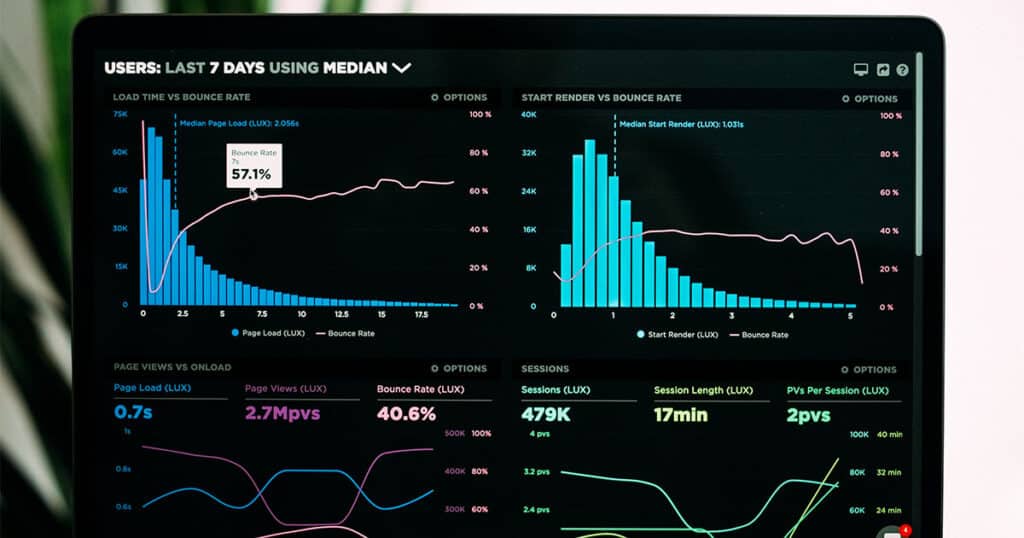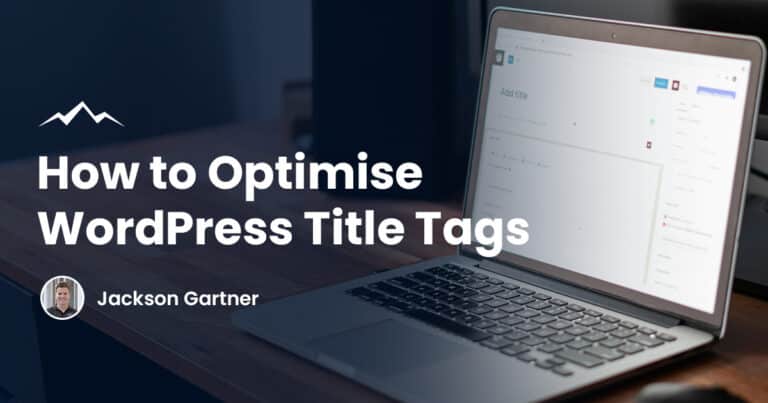If you’re a website owner, web developer or in the process of creating a website yourself then these recent web design statistics are something that you’ll want to keep in mind moving forward.
Here are 21 of the latest website design statistics that our Brisbane web design team have put together for you.
Let’s dive right into these web design stats!
Web Design Stats
1. First impressions are 94% design-related.
Website visitors can often find websites to be too complex, busy or lacking in navigation aids.
You may have the best product or service available but if your website visitors don’t like its design then they’ll leave and go to a competitor before they ever see it.
2. It only takes 50 milliseconds (that’s 0.05 seconds) for users to decide whether they like your website or not and therefore if they’ll stay or leave.
It may be common to hear the saying “don’t judge a book by its cover” but websites are subject to an extreme level of scrutiny and snap judgements that immediately influence perception of a business’s credibility.
3. 57% of internet users say they won’t recommend a business with a poorly designed website on mobile.
Websites that are not mobile responsive are poorly designed by today’s standards, this is because they don’t provide an optimal user experience for their mobile visitors.
4. 75% of consumers admit to making judgements on a company’s credibility based on their website design.
Often, users first interact with a business through their website so it’s not surprising that its design has such a great effect on their perceived credibility.
5. 70% of small business websites lack a call to action (CTA) on their homepage.
You don’t want a website visitor to go through your home page and decide they want to take the next step to then be confused about what to do next.
A well-placed ‘Contact Us’ button is all you need to get started.

Mobile Design Stats
6. As of 2024, 60.67% of global website traffic comes from mobile devices (excluding tablets).
Mobile website traffic has hovered around 50% globally since 2017 but it’s grown significantly since 2021 and has grown to almost 60%, never before has a mobile-first website design been so important.
7. 85% of adults think that a company’s website when viewed on a mobile device should be as good or better than its desktop website.
If your website visitors need to pinch and zoom on their mobile devices to view your content then they’re as good as gone.
8. 61% of users are unlikely to return to a site on mobile if they had trouble accessing it and 40% visit a competitor’s site instead.
With 9 other options on the first page of Google it doesn’t take much for a user to leave your website and try again.
9. 88% of consumers who search for a type of business on a mobile device call or go to that business within 24 hours.
This is why local SEO is so important.
For example, someone may search for the nearest hairdresser or Italian restaurant which they intend to visit later that day.
10. Tablets account for the highest add-to-cart rates on eCommerce websites at 8.58%.
If you’re an online retailer, you should give special attention to the design and user experience of the tablet design for your website.
11. Decreasing mobile site load times by 0.1 seconds can increase eCommerce conversion rates by 8-10%.
Deloitte analysed mobile site data from 37 retail, luxury and lead generation brands and found that a mere 0.1s improvement in website load time increased retail conversion rates by over 8%.
12. Over 60% off Australians use an iOS (Apple) device, nearly 39% use Android in 2024.
With well over half of all mobile users on Apple devices, optimising for iOS first is tempting but Android isn’t far behind with nearly 40% market share. This is especially important to keep in mind when developing a mobile app.

User Experience Stats
13. 39% of people will stop engaging with a website if images won’t load or take too long to load.
If a business fails to update and fix broken images on their website, what does that say about the company’s attention to detail or organisation?
14. 47% of users expect a maximum of 2 seconds loading time for an average website.
It’s never been more important to have a fast loading website.
Implementing site speed optimisations like image compression, caching and a fast hosting provider is essential for any business online today.
15. Users spend an average of 5.94 seconds looking at a website’s main image.
This shows why powerful visuals are so important on your website.
Don’t waste this opportunity to promote your brand in a positive way.
16. Users spend an average of 5.59 seconds looking at a website’s written content.
5.59 seconds isn’t much time to read all the content on a website’s homepage, this is why great visuals and attention-grabbing headlines are so important.
17. Website visitors are 58% more likely to make a purchase after seeing on-page reviews.
Adding reviews or testimonials to your website is incredibly important, just having 1 on your landing page can increase your website conversions significantly.

Search Engine Stats
18. Google drives 96% of mobile search traffic, followed by Yahoo at 2% and Bing at 1%.
Google doesn’t just dominate search on desktop, but mobile as well.
If you want to increase your mobile search traffic, you need to optimise your website for Google on smaller screen sizes.
19. Website users only read up to 28% of the words on your web page during an average visit but it’s usually closer to 20%.
On the average website, a user only has time to read just over a quarter of the words on a page and often it’s even less than that.
20. Refurbishing your old blog posts can boost traffic by over 111%.
Even if your old blog posts are lacking any SEO, if they still contain high-quality content you can touch them up and receive a huge traffic boost.
21. Websites with active blogs have 434% more indexed pages than competitors.
Google’s bots will crawl every single page on your website in search of SEO-friendly content, so the more blog posts you have on your website, the better chance you have of ranking higher in Google’s search results.




